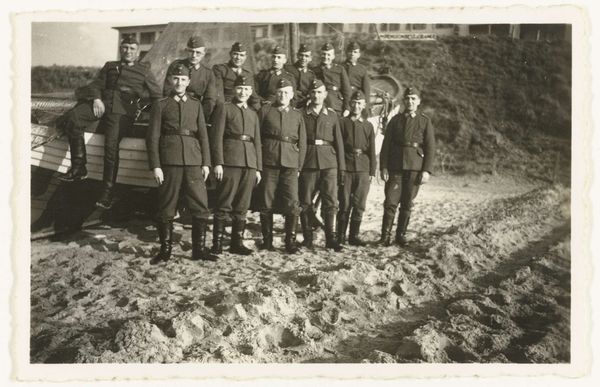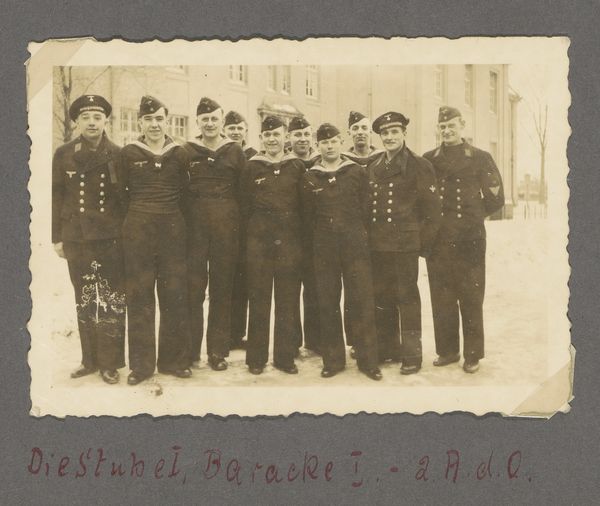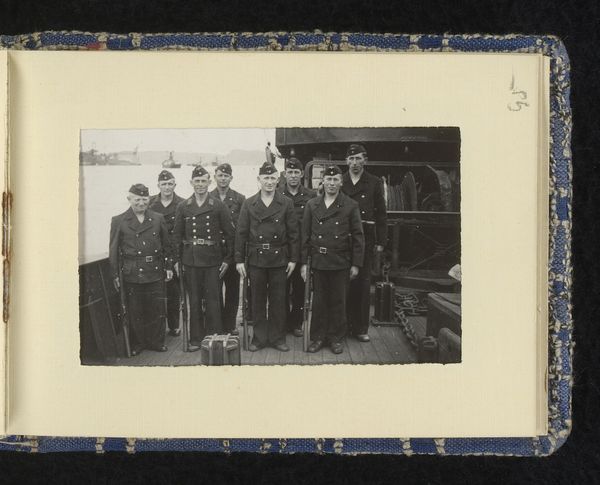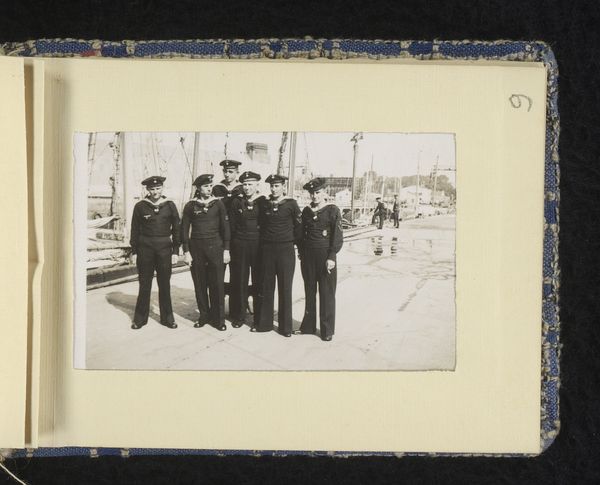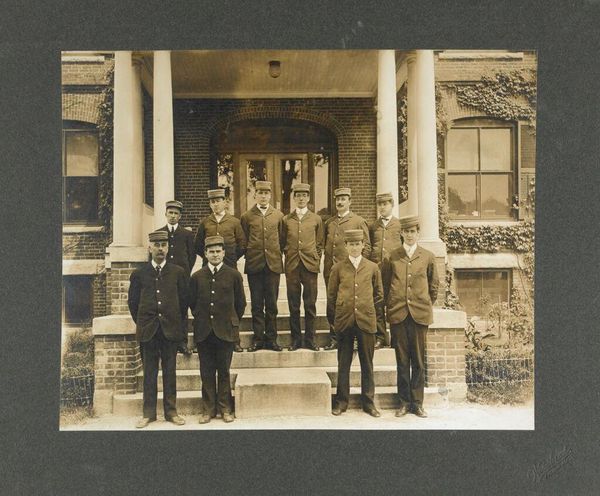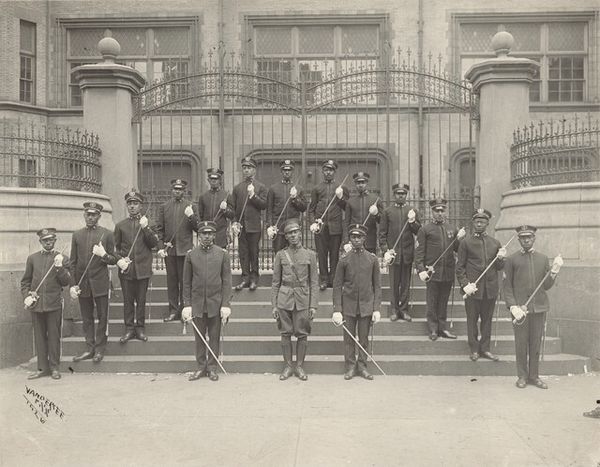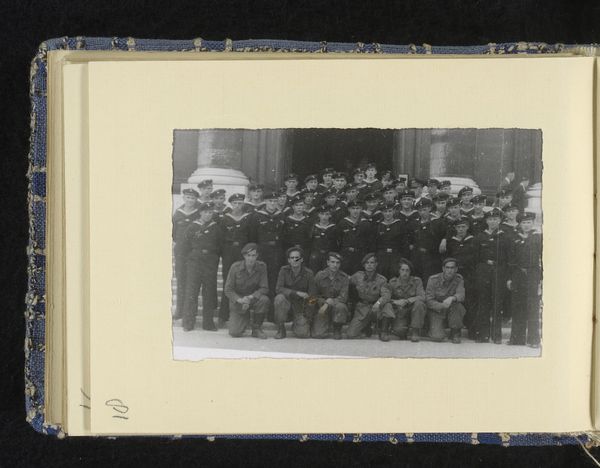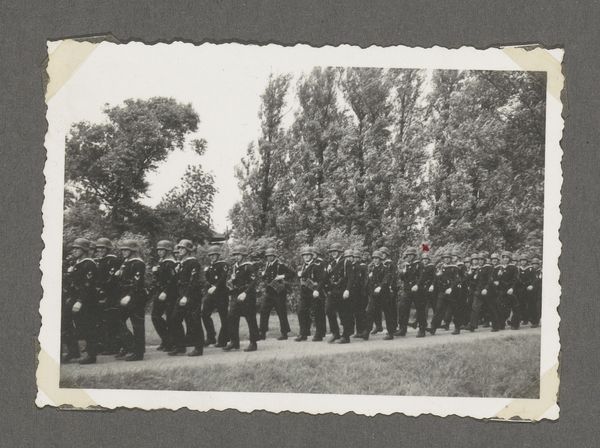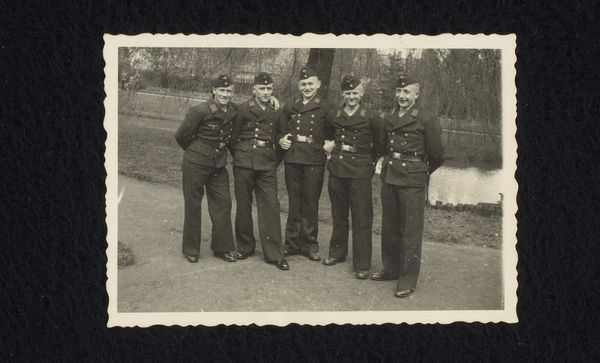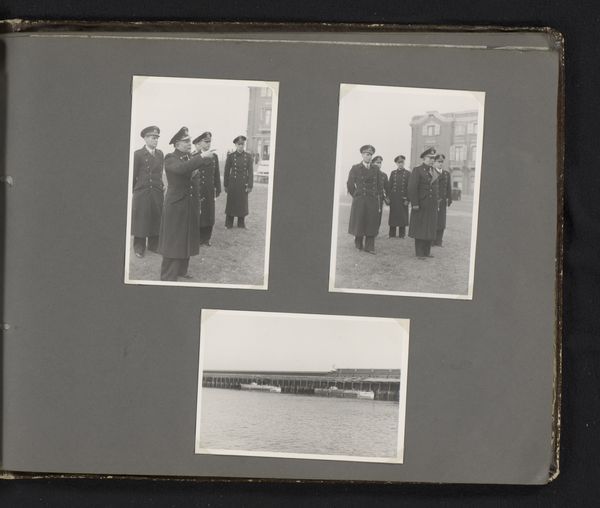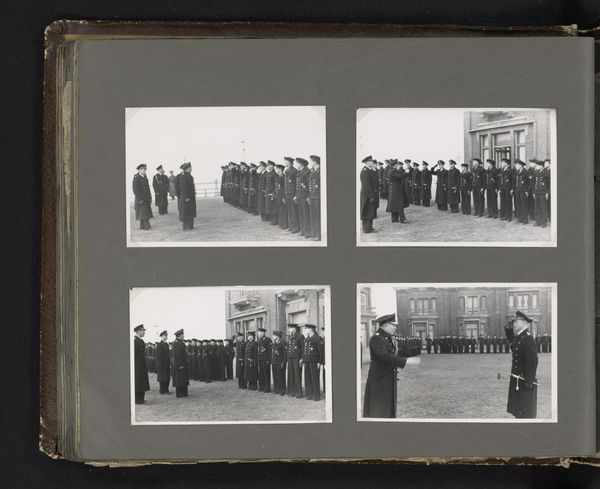
photography, gelatin-silver-print
#
portrait
#
still-life-photography
#
medieval
#
photography
#
historical fashion
#
group-portraits
#
gelatin-silver-print
#
paper medium
#
realism
Dimensions: height 85 mm, width 115 mm
Copyright: Rijks Museum: Open Domain
Curator: This arresting gelatin-silver print, "Groep militairen, arm in arm," dates from 1941 to 1945 and resides here at the Rijksmuseum. A candid portrait of camaraderie, wouldn't you agree? Editor: Candid is one word for it. I'm immediately struck by the stark, almost somber composition. The muted tones amplify a feeling of restrained emotion, don’t you think? The subjects seem trapped by the grayscale. Curator: Consider the social fabric woven here. This photograph captures a moment of respite for these soldiers, arms linked, embodying the collective experience of war. The photograph becomes an artifact, evidence of shared labor, perhaps a moment seized amidst conflict. Look at the uniformity of the navy outfits—what does that represent about nationalistic fashion? Editor: While the historical context is crucial, let’s focus on what the composition achieves independently. The repeating horizontal line created by the linked arms is powerful, conveying both unity and restriction. The limited palette of greys and blacks creates a heavy, almost claustrophobic effect. Note how the artist composes the picture to center the gaze on the second sailor from the left, and that all heads align in size except his? Curator: I am inclined to believe that your impression misses some cultural references about the political power this image represents. Think about production— the photographic process itself offered a means to document and disseminate ideology during this tumultuous time. And this, in turn, affected viewers… Editor: Yes, but even divorced from that knowledge, one can't help but feel the palpable tension captured here. Each individual is rendered, though they appear connected through uniform and gesture, the light falls individually on them creating tonal variations across the photograph. How powerful! Curator: In scrutinizing the medium of photography itself, it brings me back to labor. To further contemplate materiality, the resources required to not only outfit but photograph each individual in the medium also reveal consumption of those resources and production levels to the country during the war period. Editor: Indeed. The interplay between what is recorded and what is repressed elevates the image above mere documentation. I'm fascinated by its aesthetic power, even while acknowledging its historical weight. Curator: By acknowledging that intersection between material history and symbolism in its aesthetics, we are brought full circle into appreciating its full gravity. Editor: I find myself moved by the formal relationships at play and am captivated by what is not said—the unspoken, heavy reality imbued by composition and tone, as they reveal much about human existence under those trying historical periods.
Comments
No comments
Be the first to comment and join the conversation on the ultimate creative platform.
